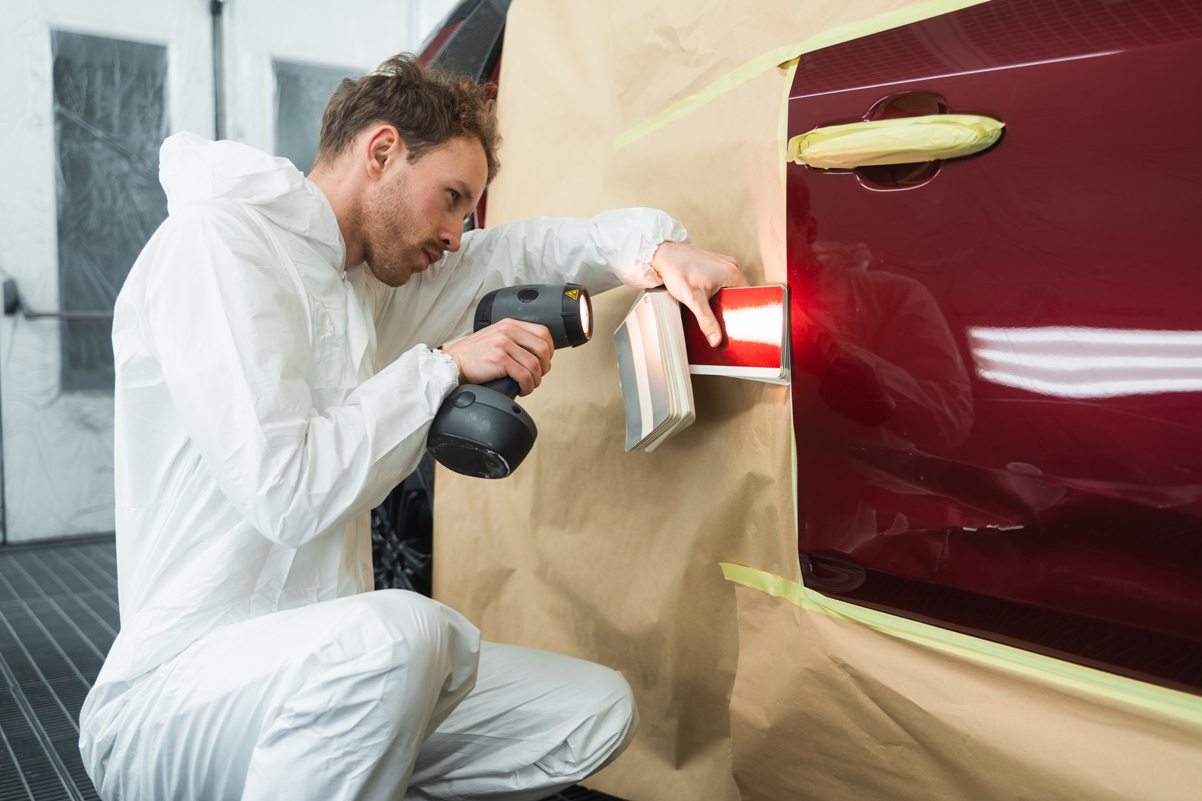Actually, producing a high quality automotive clearcoat is far away from easy. In fact, a simplistic idea that you just throw few additives and solvents into acrylic resin is very misleading. The quality of each ingredient along with the balanced percentage of each one is a science and needs a lot of research, testing in the lab and real life.
Acrylic Resin as Main Ingredient
One of the key components of modern automotive clearcoats is acrylic resin. This stuff is like the superhero of paint ingredients. It helps the clearcoat to not only make a car look like a million bucks but also protects it from UV rays, scratches, and chemical contaminants. Acrylic resins are favored for their excellent clarity, resistance to discoloration, and overall durability.
Typical Composition of a Clearcoat
Clearcoats aren’t just acrylic resin, though. They are usually a mix of several ingredients, each playing a vital role. Alongside the resin, you’ll find solvents, which help in application and drying; hardeners, to give the coating its toughness; and UV protectants, to keep the sun from wreaking havoc on the color. This concoction is carefully balanced to provide the best look and protection for cars.
In a typical automotive clearcoat, you’ll find a range of ingredients, usually numbering anywhere from five to ten, depending on the formula. These include the acrylic resin, hardeners, solvents, UV protectants, and various additives. The percentage composition can vary, but generally, it looks something like this:
Acrylic Resin (25-40%): Resin is the backbone of the clearcoat, providing the glossy finish and durability. Basically, it is a foundation of any paint, varnish or primer. The main coating’s properties are derived from the type of the resin used.
Solvents (30-50%): Solvents help in application and affect drying time. In low VOC formulas, these are reduced or replaced.
Hardeners (25-50%): Hardeners or catalysts play a crucial role in the formulation of clearcoats. They react with the acrylic resin to create a hard, durable film. This higher percentage ensures the clearcoat cures properly and achieves the necessary hardness and resistance to environmental factors.
The exact percentage can vary depending on the specific formulation and the type of clearcoat (MS, HS, UHS). Each type is formulated to balance durability, ease of application, cost and finish quality, with the hardener content being a key factor in this balance.
UV Protectants and Additives (5-10%): These components fine tune the overall performance. They protect against UV rays and can also include substances to improve flow, finish, flexibility and every other important parameter of the clearcoat.

Devil is in details
While additives sound like lesser important ingredients, in fact their existence, quality, right combination and percentage differentiate one clearcoat from another. So, what are those mysterious additives anyway?
Flow and Leveling Agents: These help in smoothing out the clearcoat, ensuring an even, streak-free finish. They are especially important in high solids formulations to prevent issues like orange peel.
UV Absorbers and Light Stabilizers: These protect the paint from the harmful effects of UV radiation, preventing fading and degradation over time.
Defoamers: These additives are used to reduce or eliminate foam during application, which is crucial for achieving a smooth finish.
Flexibilizers: Important for improving the flexibility of the clearcoat, flexibilizers are used in formulations where the coating needs to withstand bending or flexing, such as on plastic parts.
Anti-Settling Agents: These prevent the pigments and other components from settling at the bottom of the container, maintaining a consistent mixture.
Adhesion Promoters: These improve the adhesion of the clearcoat to the underlying basecoat or substrate.
Rheology Modifiers: They alter the viscosity of the clearcoat, which can be crucial for application characteristics and for achieving the right film thickness.
The world of automotive clearcoats is a fascinating blend of history, science, and innovation. For those in the collision repair industry, keeping up with these advancements isn’t just good for business; it’s a way to ensure that the work you do is as durable, safe, and environmentally friendly as possible. Stay curious and keep learning – it’s what keeps this industry exciting. Remember, a good clearcoat is the last touch of the repair, its crown!




